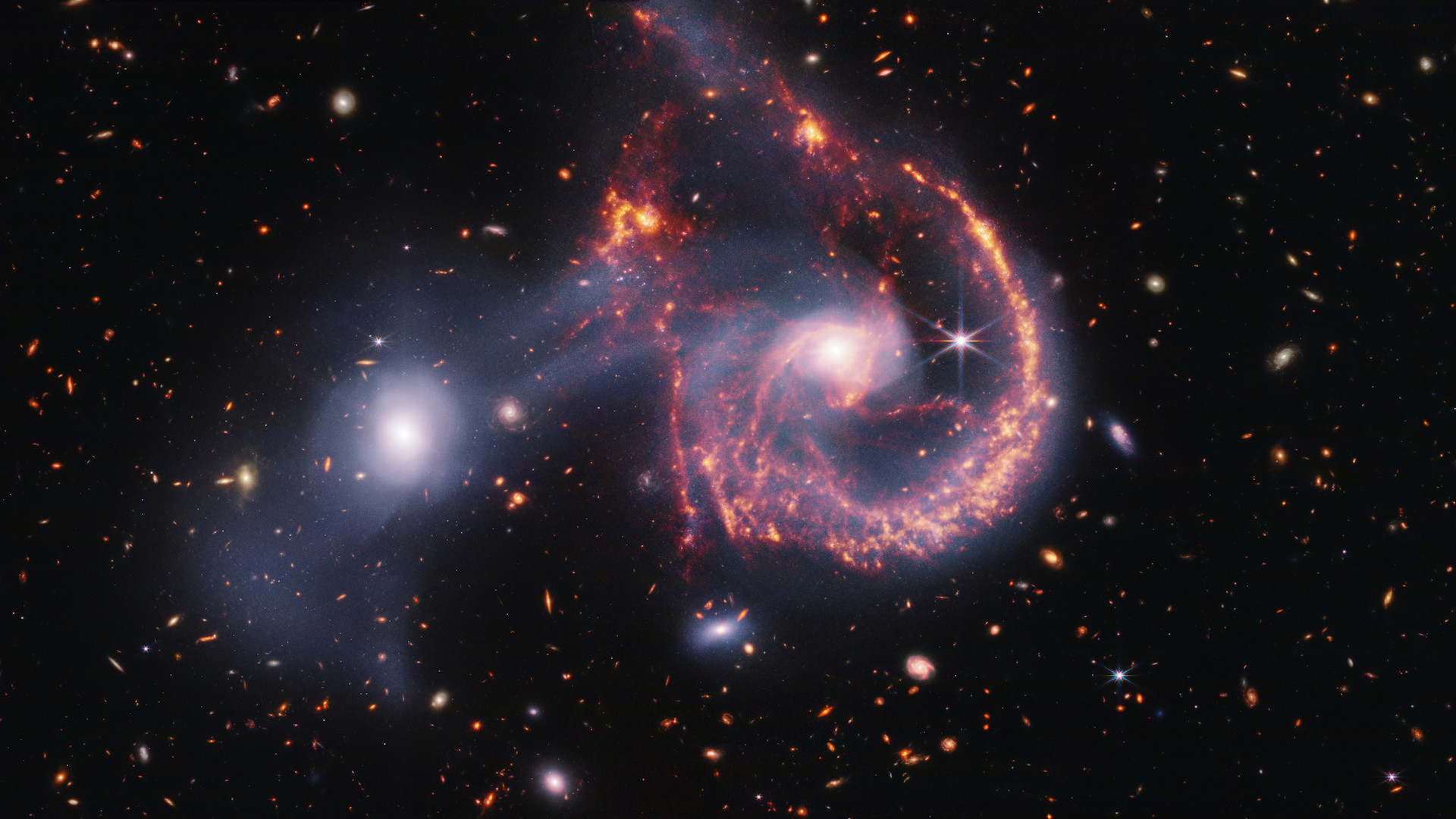
What it is: Arp 107, a pair of interacting galaxies
Where it is: 465 million light-years away, in the constellation Leo Minor
When it was shared: Sept. 18, 2024
Why it's so special: A new James Webb Space Telescope (JWST) image has revealed the striking celestial sight of a large spiral galaxy — much like our own Milky Way — interacting with a small elliptical galaxy.
The two galaxies are collectively named Arp 107 because they were first cataloged by American astronomer Halton Arp, whose 1966 "Atlas of Peculiar Galaxies" detailed interacting and merging galaxies in the night sky.
Although it was imaged last year by the Hubble Space Telescope, Arp 107 has now been recaptured using JWST's powerful infrared gaze. This means astronomers can study the two chaotic galaxies in wavelengths of light invisible to Hubble and the human eye.
Proving that sometimes it's not what you look at in the night sky that matters but how you look at it, the new image somewhat resembles a cosmic face. The two galaxy cores become its bright "eyes," while a bridge of stars connecting them forms a semicircular "smile."
Related: 35 jaw-dropping James Webb Space Telescope images
The image is a composite of data from two cameras on JWST, the largest and most powerful telescope ever launched into space. It combines observations from JWST's Mid-Infrared Instrument (MIRI) and Near Infrared Camera, which detect wavelengths of light that reveal much more than Hubble can. The MIRI image has also been published separately.
In addition to the bridge of stars pulled from both galaxies during their entanglement, JWST's data reveals star-forming regions, dust and a bright nucleus in the large "Seyfert" spiral galaxy that houses an extremely bright, point-like active galactic nucleus powered by a supermassive black hole.
The new image is reminiscent of Webb's 2022 image of the Cartwheel Galaxy in the constellation Sculptor and two smaller companion galaxies.
How to see it in the night sky: Although Arp 107 is much too far away to be visible to a good backyard telescope, September is a great time to observe the Andromeda Galaxy (M31). A spiral galaxy larger than the Milky Way, it's about 2.5 million light-years away. It's rising in the northeastern sky after dark, as seen from the Northern Hemisphere.
For more sublime space images, check out our Space Photo of the Week archives.







